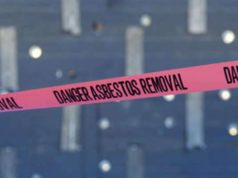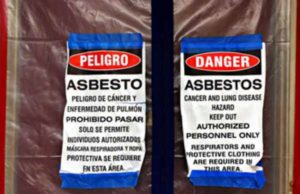
What is the Toxic Substances Control Act?
The Toxic Substances Control Act, passed by the United States Congress in 1976, is a U.S. law that regulates the introduction of already existing or new chemicals. The Toxic Substances Control Act grandfathered the bulk of existing chemicals—in contrast to international legislation in the same mold. However, as later explained, the Toxic Substances Control Act specifically regulates the majority of polychlorinated biphenyl products.
The Toxic Substances Control Act does not classify categories based on their toxic properties. Rather, the legislation prohibits the manufacture or importation of toxic and non-toxic chemicals that are not listed on the TSCA Inventory. Chemicals listed in this database are referred to as “existing chemical agents.” In contrast, those chemicals not listed on the inventory are referred to as new chemicals. In a general sense, a manufacture must submit pre-manufacturing notification to the United States Environmental protection Agency before importing or manufacturing of new chemicals is undertaken for commercial reasons. There are; however, notable exceptions, most notably those required for research and development purposes and for substances regulated under other local federal laws, such as the Federal Food, Drug and Cosmetic Act.
How is the Toxic Substances Control Act Divided?
The Toxic Substances Control Act is formally administered by the Environmental Protection Agency. The law is divided into subchapters:
Subchapter 1 of the Toxic Substances Control Act is the “Control of Toxic Substances” and is the original chapter including the regulation of polychlorinated biphenyl products.
Subchapter II of the Toxic Substances Control Act, labeled the “Asbestos Hazard Emergency Response” was formally enacted by the United States Congress in 1986 and later amended in 1990. This subchapter of the Toxic Substances Control Act authorizes the Environmental Protection Agency to implement and impose regulations for asbestos abatement in educational facilities throughout the nation. Moreover, this chapter requires accreditation of those who inspect and collect samples for and of asbestos-containing materials.
Subchapter III of the Toxic Substances Control Act, labeled the “Indoor Radon Abatement” section, was enacted by the United States Congress in 1988. This subchapter requires the Environmental Protection Agency to publish guides concerning radon health risks and to perform subsequent studies of radon levels in federal buildings and schools.
Subchapter IV of the Toxic Substances Control Act, labeled the “Lead Exposure Reduction” chapter, was formally enacted by the United States Congress in 1992. This subchapter of the Toxic Substances Control Act requires the Environmental Protection Agency to formally identify sources of lead contamination in the environment for the regulation of lead allowed products, including toys and paints. These procedures are implemented and regulated by the Environmental Protection Agency to establish local and state programs that monitor and reduce lead exposure.
The Toxic Substances Control Act and the Environmental Protection Agency:
Toxic Substances Control Act mandated the Environmental Protection Agency to protect the general public from “unreasonable risk of injury to the environment or the general health of its living organisms” through the creation of regulations on the manufacturing and sale of chemicals. This piece of legislation does not address wastes produces as byproducts of manufacturing; instead, the legislation attempts to exert direct legislative control over which forms of chemicals could and could not be used in production and for actual use. For instance, the use of a chlorofluorocarbon in manufacturing is strictly prohibited in all manufacturing processes in the United States even if no contaminants are released into the environment as a result.
The types of chemicals regulated by the Toxic Substances Control Act are typically placed into two broad categories: new and existing. A new chemical is defined as any chemical substance which is not included in the aforementioned chemical substance list published under the Toxic Substances Control Act. This database includes all chemical substances imported or imported into the country prior to December of 1979, The existing chemical list covers roughly 99% of the Environmental Protection Agency’s mandate in this piece of legislation, including roughly 8,000 chemicals produced or imported at quantities exceeding 10,000 pounds. An existing chemical may therefore include any chemical that is currently listed under section 8(b) of the Toxic Substances Control Act. The difference between a new and an existing chemical is essential, for the act regulates each classification of chemicals in several ways.
How does the Toxic Substances Control Act Regulate Existing Chemicals?
Although tasked with protecting the general public from potentially carcinogenic toxins and dangerous substances, over 60,000 chemicals were never tested by the Environmental Protection Agency because these substances were not regarded as possessing “unreasonable risks.” This inefficiency in testing essentially grandfathered these chemicals into the Toxic Substances Control Act’s existing chemical database. Research and test on these chemicals is basically non-existent, as only 200 of the 60,000 existing chemicals are tested by the Environmental Protection Agency.
The Environmental Protection Agency only has limited success in controlling the chemicals they have tested and deemed hazardous to the general public. In fact, the Environmental Protection Agency, has only been successful in restricting five chemicals (chlorofluorocarbons, dioxin, asbestos, PCB’s and hexavalent chromium) in its 36 year history. (the ban on asbestos products was formally lifted in 1991).
How does the Toxic Substances Control Act Regulate New Chemicals?
The Environmental Protection Agency’s use of the Toxic Substances Control Act regulates dangerous chemical is widely viewed as inefficient; even the Environmental Protection Agency’s Office of the Inspector General called the bill “inconsistent and in possession of a minimal presence.” The bulk of the agency’s inefficiencies are due to red tape and a fragmented hierarchy—there are simply too many departments and sub-organizations to effectively evaluate and regulate new chemicals.
What did the Toxic Substances Control Act Say about Asbestos?
Toxic Substances Control Act defines asbestos as the formal name for a group of naturally-occurring minerals, that when disturbed, separate into very thin—yet strong—fibers. These fibers are extremely durable and resistant to heat. Because of these qualities, asbestos was regarded as extremely useful in the automobile and construction industry.
Asbestos breaks down into dust of microscopic fibers (these fibers are carcinogenic). Because of their shape and size, these tiny fibers will remain suspended in the air for long periods of time and thus can easily penetrate tissues of the lungs or chest cavity once ingested or inhaled. Because of their relative strength and durability, these microscopic fibers may remain in the body for a number of years thereby becoming the cause of several asbestos-related diseases. Symptoms of asbestos-related diseases typically do not appear for one to three decades after initial exposure takes place. Therefore, long before symptoms or its effects are detectable, an asbestos-related disease or injury to the body may have already taken place. The Environmental Protection Agency states that there is no safe level of asbestos exposure known; as a result, exposure to asbestos fibers should be avoided at all times.
The Toxic Substances Control Act states that any building on an agricultural establishment may contain asbestos or asbestos-containing products. Often used for insulation and as a fire impeder, asbestos and asbestos-containing materials may be found in a number of building construction materials, including furnace insulation materials, pipe materials, millboard, asbestos shingles, textured paint, floor tiles and an assortment of other coating materials. Moreover, asbestos may also be found in vehicle brakes.




























